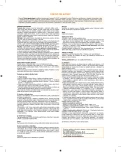Analgesia for labour in the Czech Republic in the year 2011 from the perspective of OBAAMA-CZ study – Prospective National Survey
Authors:
P. Štourač 1,2,6; J. Bláha 1,3; P. Nosková 1,3; R. Klozová 1,4; D. Seidlová 1,5; Jiří Jarkovský 6
; H. Zelinková 6; Obaama-Cz Studijní Skupina
Authors‘ workplace:
Sekce porodnické anestezie a analgezie ČSARIM, předseda výboru MUDr. J. Bláha, Ph. D.
1; Klinika anesteziologie, resuscitace a intenzivní medicíny LF MU a FN, Brno, přednosta prof. MUDr. R. Gál, Ph. D.
2; Klinika anesteziologie, resuscitace a intenzivní medicíny 1. LF UK a VFN, Praha, přednosta doc. MUDr. M. Stříteský, CSc.
3; Klinika anesteziologie a resuscitace 2. LF UK a FN Motol, Praha, přednosta MUDr. T. Vymazal, Ph. D., MHA
4; II. anesteziologicko-resuscitační oddělení FN, Brno, primářka MUDr. D. Seidlová, Ph. D.
5; Institut biostatistiky a analýz LF MU, ředitel doc. RNDr. L. Dušek, Ph. D.
6
Published in:
Ceska Gynekol 2015; 80(2): 127-134
Overview
Goal of the study:
The aim of national survey was to describe current practice for analgesia during labour provided by anaesthesiologists in the Czech Republic (CZE).
Type of the study:
National prospective observational.
Setting:
49 obstetric departments in CZE.
Methods:
We aimed to enrol all 97 obstetric departments in CZE and to monitor every case of anaesthetic care in peripartum period during November 2011. Data were recorded to Case Report Form with two parts (Demography 2010 and Case Report) into TrialDB database (Yale University, USA; adapted IBA, MU, CZE). Demographic data for CZE were obtained on request by ÚZIS. The data were analysed using SPSS 22.
Results:
We enrolled 1943 cases of anaesthesiological care and 579 (29.8%) of them was to relief labour pain. Population and center weighted estimate of incidence of epidural labour analgesia was 12.5% (95% CI: 10.6% – 14.4%). Epidural analgesia was the most frequently applied via Tuohy needle G18 (97.8%), with administration of an epidural catheter G20 (95.7%), via medial approach (98.8%), in lateral position (76.7%) by the loss of resistance method (94.3%). All administrations of epidural analgesia were started by initial bolus, only in 28.2% of cases were followed continously. Always has been applied mixture of local anaesthetic with sufentanil at a dose of 3–10 mcg. Bupivacaine was most frequently used local anaesthetic (80.7%), followed by levobupivacaine (12.6%). Median concentrations both bupivacaine and levobupivacaine were 0.125% (min. 0.1%, max. 0.3%).The most common complication of epidural analgesia was repeated puncture (21.2%), blood in the catheter (1.4%), blood in the needle (1.2%), unintended puncture of the dura mater (0.7%) and transient paresthesias (0.5%).
Conclusion:
In comparison to previously published data there was trend for lower incidence of epidural analgesia for labour in the CZE.
Keywords:
labour analgesia, epidural analgesia, national survey, Czech Republic
Sources
1. Heesen, M., Van de Velde, M., Klöhr, S., et al. Meta-analysis of the success of block following combined spinal-epidural vs epidural analgesia during labour. Anaesthesia, 2014, 69, 1, p. 64–71.
2. Chestnut, D., et al. Chestnut‘s obstetric anesthesia: principles and practice, Fifth Ed. 2014, Elsevier. ISBN: 978-1-4557-4866-2.
3. Kralert, M. Současný stav porodní analgesie v ČSSR. Čs Gynek, 1985, 50, s. 185–190.
4. Liu, ZQ., Chen, XB., Li, HB., et al. A comparison of remifentanil parturient-controlled intravenous analgesia with epidural analgesia: a meta-analysis of randomized controlled trials. Anesth Analg, 2014, 118, 3, p. 598–603.
5. Nosková, P., Bláha, J., Klozová, R., et al. Postpunkční cefalea v porodnictví. Anest intenziv Med, 2014, 25, 3, s. 194–202.
6. Pařízek, A. Kritické stavy v porodnictví. 1. vyd. Kamenice: Mother Care Consulting, 2012. ISBN 978-80-7262-949-7.
7. Pařízek, A. Porodnická analgezie a anestezie v České republice v roce 2002. Anest intenziv Med, 2004, 6, s. 291–293.
8. Pařízek, A., Bláha, J., Nosková, P. Porodnická analgezie a anestezie v České republice v roce 2012. 20. výročí programu postgraduálního vzdělávání. Čes Gynek, 2012, 77, s. 346–349.
9. Ranganathan, P., Golfeiz, C., Phelps, AL., et al. Chronic headache and backache are long-term sequelae of unintentional dural puncture in the obstetric population. J Clin Anesth, 2014, 12, S0952-8180(14)00346-8. [Epub ahead of print].
10. Shrestha, B., Devgan, A., Sharma, M. Effects of maternal epidural analgesia on the neonate – a prospective cohort study. Ital J Pediatr, 2014, 40, 1, p. 99 [Epub ahead of print].
11. Schnabel, A., Hahn, N., Muellenbach, R., et al. [Obstetric analgesia in German clinics. Remifentanil as alternative to regional analgesia]. Anaesthesist, 2011, 60, 11, S. 995–1001.
12. Sng, BL., Leong, WL., Zeng, Y., et al. Early versus late initiation of epidural analgesia for labour. Cochrane Database Syst Rev. 2014, Oct 9;10:CD007238.
13. Stourac, P., Blaha, J., Klozova, R., et al. Anesthesia for Cesarean Delivery in the Czech Republic: A 2011 National Survey. Anesth Analg, 2014 [Epub ahead of print].
14. Štourač, P., Bláha, J., Nosková, P., et al. Časná poporodní anestezie z pohledu studie OBAAMA-CZ – prospektivní observační studie. Anest intenziv Med, 2014, 25, 5, s. 341–347.
15. Štourač, P., Kuchařová, E., Křikava, I., et al. Establishment and evaluation of post caesarean acute pain service in a perinatological center: retrospective observational study. Čes Gynek, 2014, 79, 5, s. 363–370.
16. Vavřinková, B., Binder, T., Horák, J. Využití nalbuphinu v porodnické analgezii. Čes Gynek, 2010, 75, 6, s. 564–568.
Labels
Paediatric gynaecology Gynaecology and obstetrics Reproduction medicineArticle was published in
Czech Gynaecology

2015 Issue 2
Most read in this issue
- Birth hypoxia
- Measurement of gestational sac volume in the first trimester of pregnancy
- Ovaria borderline tumor – fertility-sparing surgery; case report
- Specifics of medical care for lesbians
